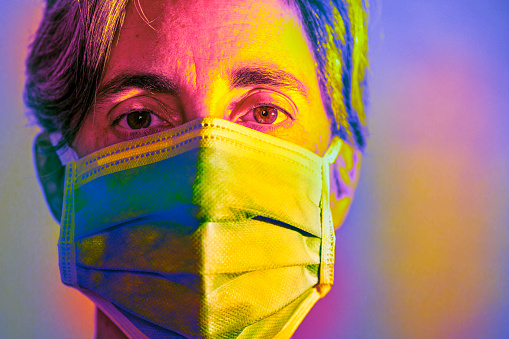President Trump flew to Arizona on Tuesday to visit a factory that’s making protective face masks to slow the spread of the coronavirus.
Asked before departing the White House if he would wear a mask himself, he indicated that “if it’s a masked facility,” he would, Reuters reports. But there was little sign of any precautions as he arrived in Phoenix.
“Vice President Mike Pence was criticized for not wearing a face mask when visiting patients at Minnesota’s Mayo Clinic last month, and he apologized for it during a television interview on Sunday,” Reuters says.
The factory is run by Honeywell International and usually makes jet engines, satellite technology and other aerospace products.
Instead, it now churns out surgical-grade N95 masks for the Department of Health and Human Services, with the goal of producing more than 20 million per month, in combination with another Honeywell facility in Rhode Island.
Just two weeks ago, hundreds of protesters, many in MAGA hats and waving American flags, gathered at the Arizona Capitol in Phoenix, calling on the governor to re-open the state. Few were wearing masks.
In fact, wearing a mask, or not, has become a significant question on the nation’s deeply divided political line in recent weeks.
Late last month, hundreds of protesters, some displaying Nazi and racist symbols and heavily armed, invaded the Michigan Capitol building in Lansing, denouncing Democratic Gov. Gretchen Whitmer’s stay-at-home order, which was about to expire along with her declaration of a state of emergency.
“Conspicuously,” CNN reports, “most weren’t wearing face masks.”
Trump sided with the protesters, calling them angry, but “very good people.”
Whitmer quickly signed new executive orders, extending the emergency declaration through May 28.
All this, CNN says, is “another instance of one side of the political aisle disbelieving or disregarding science. And in light of new modeling projecting that cases and deaths will increase as states ease restrictions, it’s the kind of move that could threaten people’s actual lives.”
Meanwhile, the federal Centers for Disease Control (CDC) is recommending that everyone — including those seemingly healthy — wear masks over their mouths and noses when away from home.
In scientific circles, there is still debate over just how effective fabric masks, whether commercial or homemade, are against the virus.
Rachael Jones, an associate professor of family and preventive medicine at the University of Utah, told the science website Live Science that “in the case of a fabric mask, wearers may well be wafting in particles small enough to flow right through the fabric.”
Still, the CDC recommendation that everyone wear a mask is worthwhile, because “any kind of impediment is better than nothing,” said May Chu, a clinical professor in epidemiology at the Colorado School of Public Health.
But she emphasized that masks must be accompanied by social distancing — staying at least 6 feet away from one another — to help blunt the virus’s spread.



